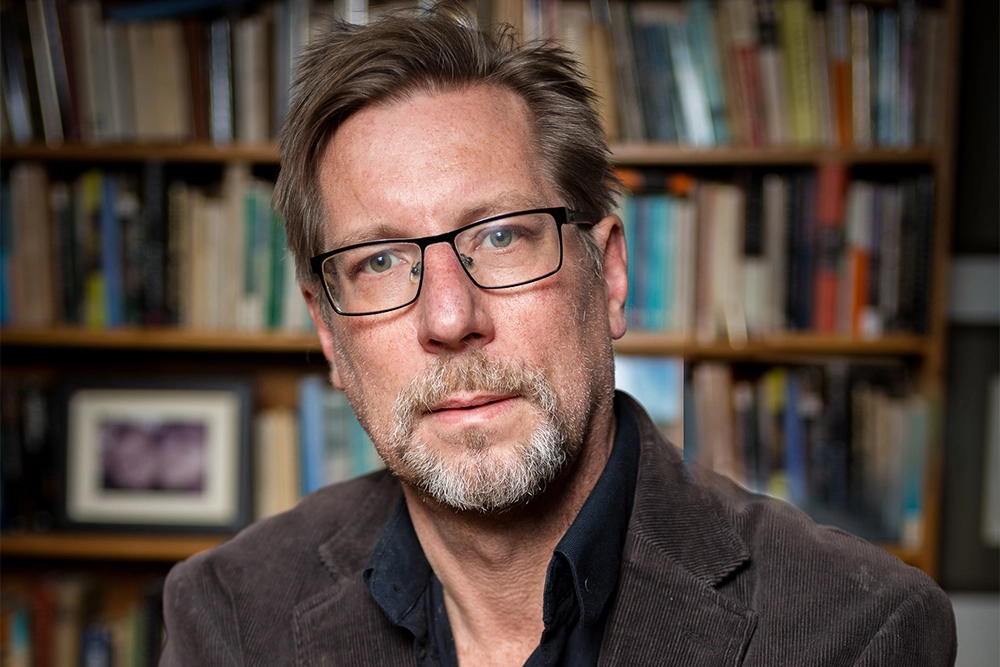
Sept. 1 marks the 80th anniversary of Germany’s invasion of Poland and the start of World War II in Europe, and world leaders will gather to mark the event. But what led Germans to embrace Nazi rule more than six years earlier, which would lead them into the war? University of Illinois history professor Peter Fritzsche has explored that at length and does so again in his upcoming book “Hitler’s First Hundred Days.” Fritzsche spoke with News Bureau social sciences editor Craig Chamberlain.
The 100 days in your title date from Nazi leader Adolf Hitler’s appointment as the German chancellor in 1933, the result of a political deal. What do you find in those 100 days that is so surprising?
What is surprising is the speed by which a very partisan and divided society, fragmented between left and right, between Social Democrats, Communists and National Socialists (Nazis), between Catholics and Protestants, seemingly transformed itself – by terror from above and “conversion” from below – into a seemingly unified society recognized widely as a “people’s community.”
Along the way, most Germans accepted basic premises of the Nazi worldview: the distinction between friend and foe, the view that Germans had almost been destroyed as a people at the end of World War I, the corollary that they would have to fight internal and then external enemies in order to ensure their survival, and the identification of the Jew as a non-German alien and even enemy.
Compared with day one, Jan. 30, 1933, Germany was not recognizable on day 100, at least to outsiders. To sympathizers, German history had healed itself in 100 days.
And how do you explain the transformation?
The highly partisan positions of German nationalists made a defense of the republic, civic institutions and common decency unthinkable because even the National Socialists were regarded as far preferable to the moderate Social Democrats. The political divide invalidated any defense of civil society in almost any form. There was also not more resistance from anti-Nazis because the apparent evidence of widespread pro-Nazi acclamation seemed overwhelming.
Moreover, the Nazis represented themselves as a “third force,” neither left nor right, neither simply nationalist or only socialist, a force that would renew the nation and restore its future. They spoke in the future tense. Their violence appeared as a reckoning on the way to national redemption. The Nazis mobilized enormous hope and energy in the first 100 days, tentatively at first, then decisively through “new days” of national celebration and thanksgiving, including May Day, traditionally a socialist day of protest. They promised to break with austerity economics and put the interests of ordinary Germans first.
You contrast Hitler’s first 100 days with U.S. President Franklin Roosevelt’s first 100, which overlapped in the depths of the Great Depression. What do you find striking in that comparison?
Roosevelt’s 100 days were an imaginative and improvised effort to restore confidence and put Americans back to work through government legislation. They did not seek to destroy or cleanse the “system.” Hitler’s 100 days were to consolidate power around his party, which then spoke for the nation at large. However, had Hitler not been able to show economic progress quickly, which he did, his political successes would have been far less durable.
Roosevelt spoke in an inclusive voice, especially when he addressed Americans in fireside chats; Hitler divided Germans into friends and foes, and promised a final reckoning with enemies. Hitler and his conservative allies wanted to smash the Weimar Republic, not save the fiscal or economic ship of state.
We’re seen a rise of authoritarianism worldwide, as we did in the 1930s, which has caused some to raise the specter of the German experience. Are there any universal lessons to learn?
There is a loss of faith today, as in the 1930s, with liberalism and liberal process and its inclusive multiethnic premise, and much more faith in the so-called “people,” a more homogenously defined ethnic and religious whole. Back then, the idea of the “Volk” (people) was pitched against the republic or the “system”; today ethnic democracy is pitched against liberalism or the “system.” Then as now, there is deep mistrust of the austerity economics promoted by elite institutions. There is a regroupment of the idea of community.
However, liberal institutions have been far more durable and responsive in the 2010s than their European counterparts were in the 1930s. Issues such as economic austerity and immigration cannot become the sole property of illiberal actors. What is very different is that there is no organized, violent, paramilitary array of forces poised to clobber the left.
To put it somewhat bluntly: If fascism was offensive and future-oriented, and basically confident and optimistic, right-wing populism today is defensive, embattled and nostalgic. Back then, fascism and Nazism attracted young people, students and intellectuals in a way that right-wing populism today simply does not. In Germany in 1933, the most National Socialist institution was the university.
The lessons: Political actors must defend their opponents on questions of process and procedure. Extreme partisanship signalizes the illegitimacy of the constitutional system. If opponents are demonized as “others” and not recognized as citizens living in a complex and diverse society, new in-group solidarities will trample society in favor of a newly and more narrowly defined community that prioritizes what they want to hear over democratic process.
After 1933, Germany became far less diverse, religiously, politically, intellectually; the Nobel Prizes it used to win are now won by the United States, with its large emigre population. 1933 always stands as a choice.
Editor’s note:
To reach Peter Fritzsche, email pfritzsc@illinois.edu.
Fritzsche’s book “Hitler's First Hundred Days: When Germans Embraced the Third Reich” will be available in March from Basic Books. His previous books include “An Iron Wind: Europe Under Hitler” and “Life and Death in the Third Reich.”
Reproduced with permission from the Illinois News Bureau.